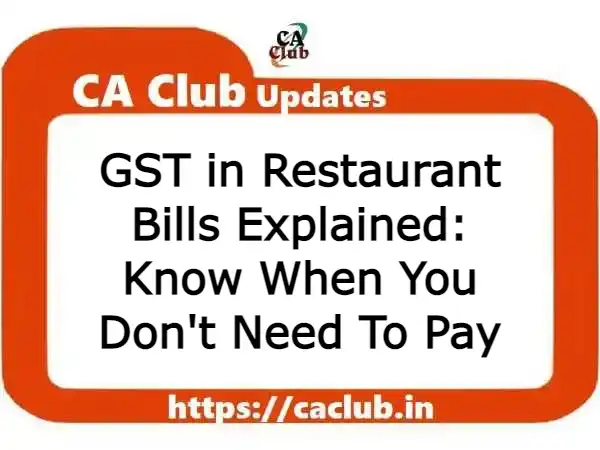Navigating restaurant bills can be a perplexing experience, especially when it comes to understanding the Goods and Services Tax (GST) charged on your meal. As a customer, it’s crucial to be aware of how taxes work and whether you’re being charged correctly. In this comprehensive guide, we’ll demystify GST in the context of restaurants, discuss the nuances of CGST and SGST, and explain the Composition Levy Scheme to help you determine if a restaurant is eligible to charge GST on your bill. With this knowledge, you can confidently ensure that you’re paying the right amount and safeguard yourself from being overcharged.
A Breakdown of CGST and SGST
Before diving into GST rates for different types of restaurants, let’s first understand the two components of GST which appear in the dining bills, first is Central Goods and Services Tax (CGST) and the second is State Goods and Services Tax (SGST). CGST is the portion of tax revenue that goes to the central government, while SGST is the part that goes to the respective state.
GST Rates for Restaurants
Depending on the amenities provided, restaurants fall into different categories with distinct GST rates:
i) Non-AC/non-alcohol serving hotels: 12%
ii) AC/alcohol-serving hotels: 18%
iii) Luxurious or 5-star hotels: 18%
The Composition Levy Scheme: Who Can Charge GST?
Interestingly, not all restaurants are eligible to charge GST. The Composition Levy Scheme comes into play here. This scheme allows small taxpayers with a total turnover of less than Rs 50 lakh in the previous financial year to pay a fixed percentage of their annual turnover as tax to the government on a quarterly basis.
When a restaurant opts for the Composition Levy Scheme, it cannot charge GST to its customers. So, how do you check if a restaurant falls under this scheme?
How to Verify a Restaurant’s GST Status
To determine whether a restaurant is a regular GST payer or a composite payer, follow these steps:
i) Visit the GST portal at https://www.gst.gov.in.
ii) Click on ‘Search taxpayer’ and select ‘Search Composition Taxpayer’.
iii) Enter the GST number found on the restaurant bill.
iv) Review the search results to determine the restaurant’s GST status.
If the restaurant is a composite payer, you should not be charged GST on your bill. On the other hand, if it is a regular payer, you are required to pay the applicable GST amount.
Reporting Incorrect GST Charges
In case you find a restaurant forcibly charging GST while being under the Composition Levy Scheme, you can file a complaint with the Grievance Redressal Committee at https://gstcouncil.gov.in/grievance-redressal-committee-grc.
Conclusion
Armed with a clear understanding of GST, CGST, SGST, and the Composition Levy Scheme, you can now confidently review your restaurant bills and verify if you’re being charged appropriately. By following the steps outlined in this guide, you can determine a restaurant’s GST status and take action if you find any discrepancies. Stay informed, enjoy your dining experiences, and feel empowered knowing that you’re well-versed in navigating restaurant taxes.
